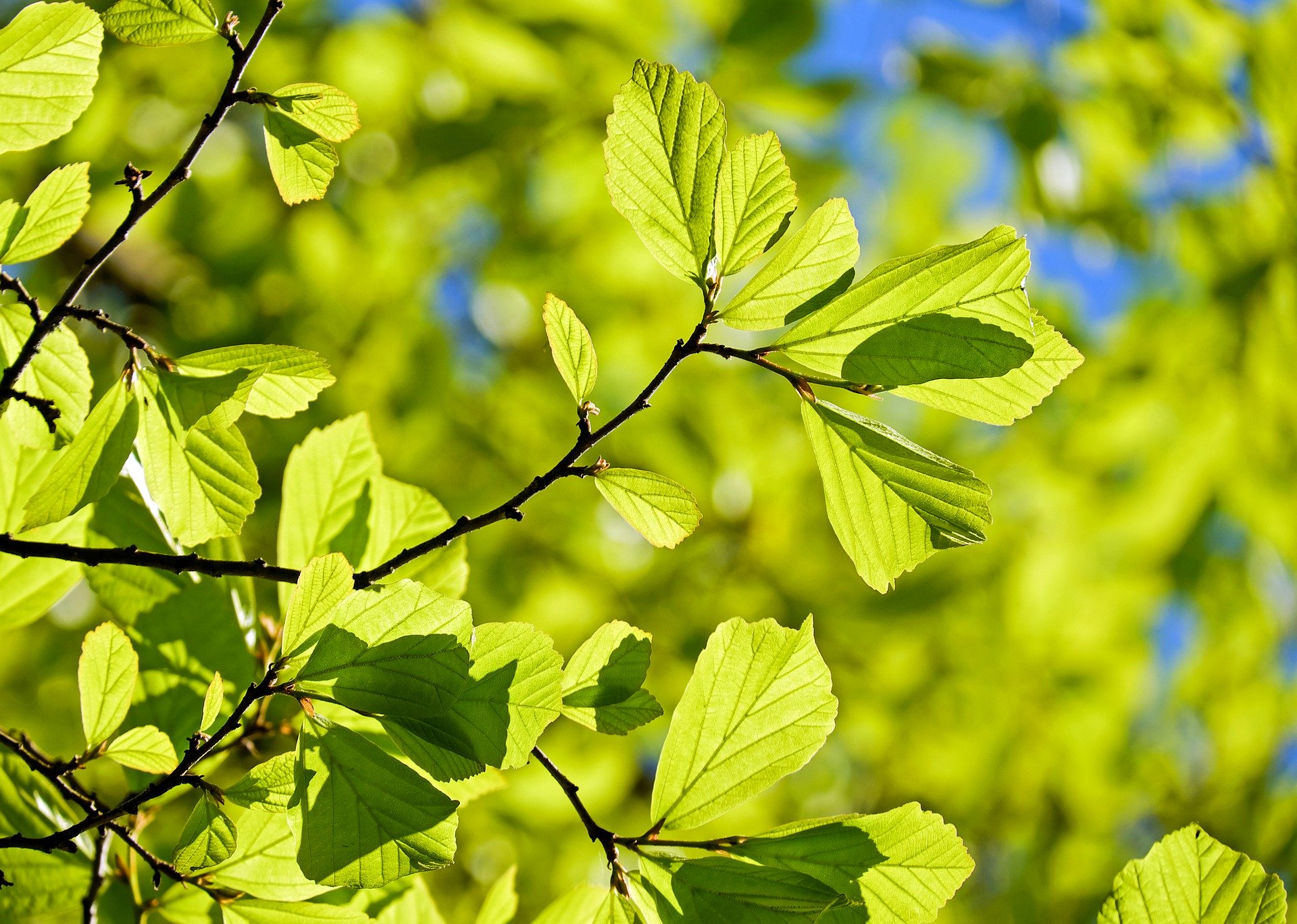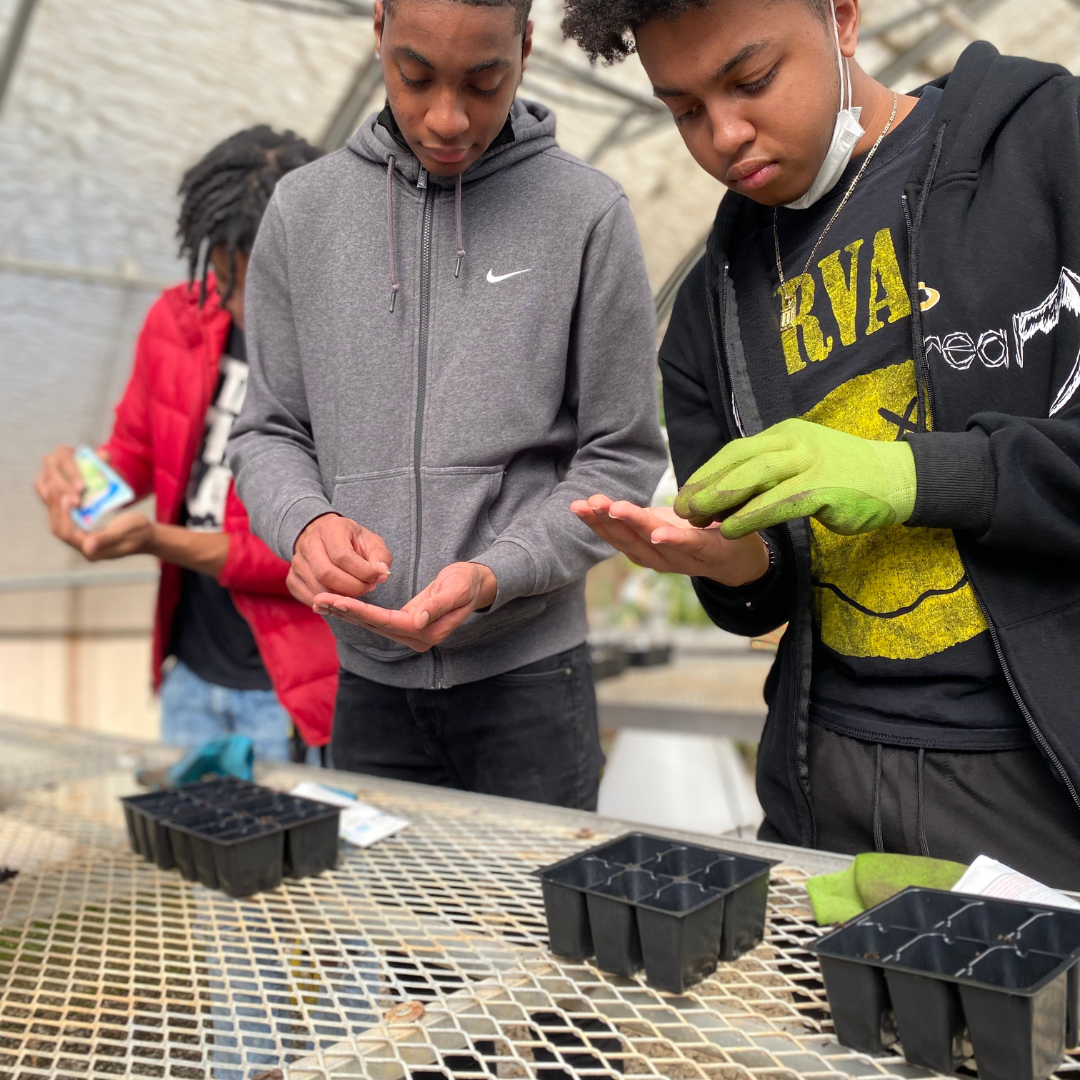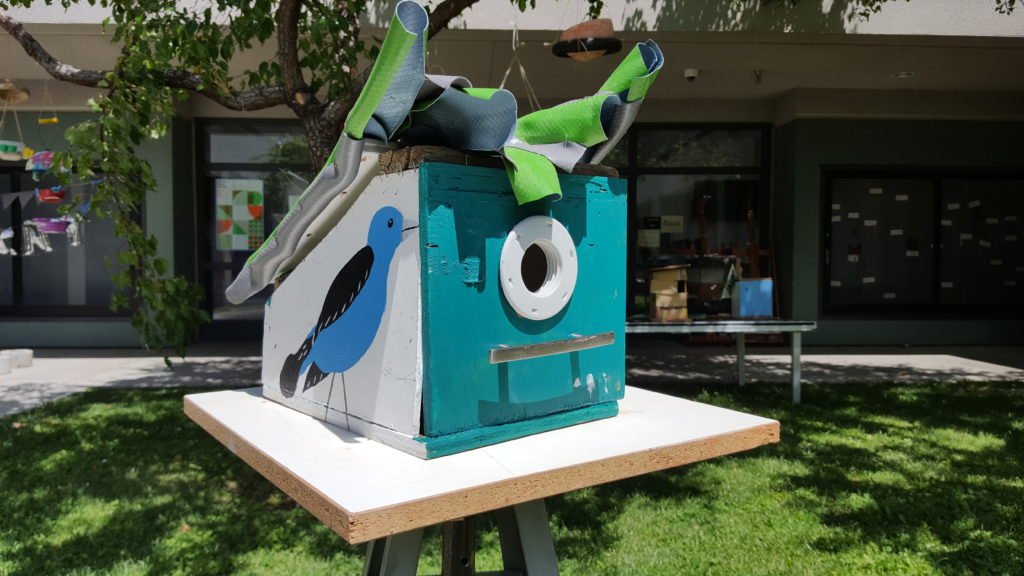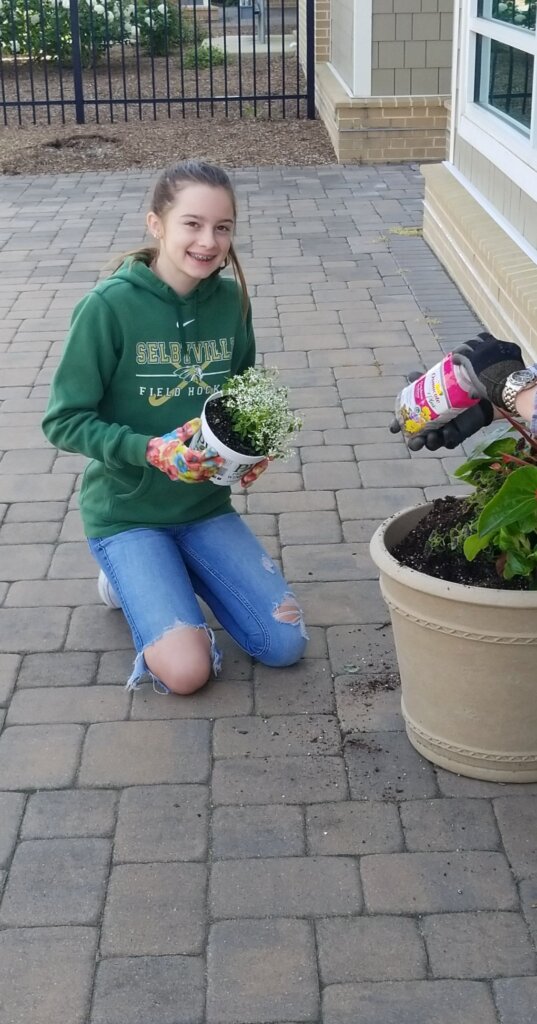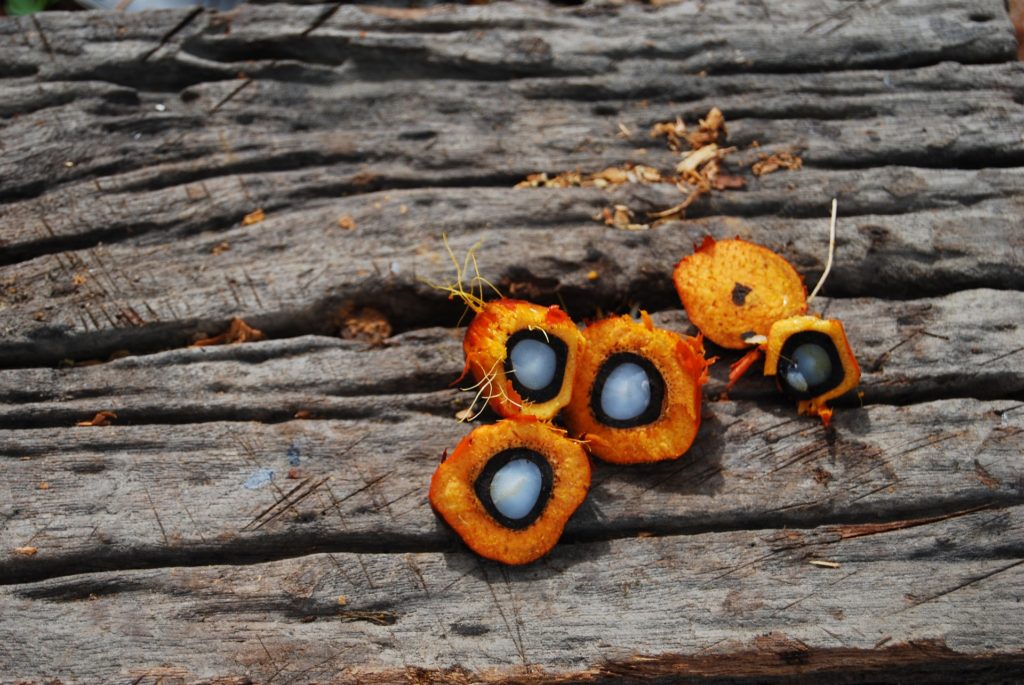Happy New Year! Here at the Jane Goodall Institue, we’re starting 2025 with a renewed resolve to make the world a better place. In keeping with Jane’s belief that every individual action can make a big difference, we’ve made a few conservation-minded New Year’s resolutions of our own — join us!
1. EXPLORE PLANT-BASED RECIPES
With #veganuary making its annual return to social media, you may have already heard the many benefits of going plant-based for your personal health, the well-being of non-human animals, and the protection of our planet. If drastic changes in what you eat seem overwhelming, remember that changing your lifestyle doesn’t have to be a complete upheaval to be revolutionary! We encourage everyone to make small changes where they can, which is why our cookbook, 🔗 #EATMEATLESS, means both “eat meatless” and “eat meat less” — do what you are able to in your circumstances, and know that you’re making a difference!
Get the 🔗 #EATMEATLESS cookbook for recipe inspiration, and share your own recipes with us using the same hashtag and tagging us @janegoodallinst on social media! Here’s a 🔗 special preview of just one tasty recipe, and keep an eye out for more on our social media channels!
2. DISCOVER LOCAL WILDLIFE
We all love animals, and charismatic megafauna — relatively large and popular animals, like lions, elephants, and of course, chimpanzees — from all over the world regularly grab our attention! But what about the many other essential species in our backyards? Learning about native species is a fantastic way to make a difference this year in your local ecosystem!
Discovering and appreciating the native wildlife in your area becomes even more enriching through the practice of citizen science. Volunteers in communities collect valuable data for scientists to analyze, contributing to a broader understanding of local ecosystems. This mirrors the essential work of our 🔗 forest monitors in Western Tanzania who patrol village forest reserves, keenly observing biodiversity and promptly alerting village and government leaders about evolving threats. Consider using apps like 🔗 Seek by iNaturalist and 🔗 Cornell Lab’s Merlin Bird ID to track your findings, and join many of our JGI-USA staff this February by participating in the national 🔗 Great Backyard Bird Count!
3. BE A GUARDIAN FOR NATIVE SPECIES
The best part of learning new things is getting to apply them to the real world! Once you know about native species in your area, you can better protect them. Do you have any native bees around you? Building a 🔗 bee hotel helps keep solitary bees warm and safe for the winter! Live near a pond with amphibian friends? Try leaving your autumn leaves on the ground for them to burrow under! There are lots of ways to create a 🔗 backyard wildlife refuge.
Let’s not forget the flora to our fauna; another way to commit to this resolution is by planting native trees! JGI and Jane recognize the value of forests to all living beings, and we’re so inspired by the many groups who restore native forests in Jane’s name, like the California Volunteers who committed last year to planting 90,000 trees in honor of Jane’s 90th birthday (🔗 learn more). If you’re not sure where to start, use this handy resource to 🔗 find the right native tree for your area.
4. CUT DOWN ON SINGLE-USE PLASTICS
Plastics are a part of our modern life, making up everything from the containers that keep our groceries fresh to the devices used in providing essential medical care. But not every plastic is essential, and we can all find ways to replace some single-use plastics with more sustainable alternatives. A great way to start is by learning more about what plastics you currently use — check out this 🔗 Roots & Shoots Waste Audit for an easy guide to assessing your own plastic consumption.
Once you know what single-use plastics you want to cut down on, it’s time to find some alternatives for you to live your best, green life! Many single-use plastics can be easily replaced by reusable items, like 🔗 water bottles, 🔗 tote bags, and 🔗 coffee cups — our 🔗 JGI eStore has a variety of fun and practical options for each of these and more! Can’t find what you’re looking for? Thankfully there are many other online and in-person shops offering other sustainable, ethically-sourced, and reusable products; take the time to find what works best for you so that you don’t create more waste.
5. KICKSTART A COMMUNITY CONSERVATION PROJECT
Community-led conservation is at the core of our programs at JGI — who better to lead change than the people who are most affected? Your knowledge of your community, shared resources, and values is an incredible asset when it comes to grassroots conservation. This is also at the heart of our youth action program, Roots & Shoots, and it is woven into how Roots & Shoots groups choose their projects.
To start a community conservation project, we recommend using our 🔗 4-step formula:
- Step 1: Get inspired to make a difference! (hint: if you’re reading this blog post, you’re already there 😉)
- Step 2: Observe your community — strengths, issues, and gaps in resources — to see where you could be most helpful (🔗 learn how to create a community map)
- Step 3: Take action by choosing an issue or gap you’ve observed, and working towards a solution that your community can easily implement
- Step 4: Celebrate your efforts, and reassess your successes and learnings to inform you next step or next project!
Let us celebrate your hope-filled work too by adding your story to our 🔗 Tapestry of Hope!
6. INCREASE YOUR IMPACT WITH A ROOTS & SHOOTS GROUP
What’s better than starting a conservation project in your area? Starting a group! Working collaboratively with others is a great way to keep up your motivation, increase your impact, and make friends! This group can take a variety of forms, from an after-school club, to an office sustainability team, a neighborhood cleanup committee, or a casual group of friends that meets weekly.
If you don’t know where to start, check out our guide on 🔗 how to start a Roots & Shoots group! All people young in years and young of heart are welcome to join our community of changemakers, and resources like this are free to use — no registration required! (Though it is highly recommended 😊)
7. SUPPORT EXISTING CONSERVATION ORGANIZATIONS
While we encourage more individuals to engage in community projects, we also want to give a shout-out to the incredible organizations—both small and large—that are already making significant strides in the conservation world. If you’re unsure about starting an independent project or group, there’s likely an organization nearby that can offer inspiring ideas!
Perhaps there’s a wildlife rehabilitation center near you conducting regular supply drives, or a local park that could benefit from an extra set of hands during clean-up efforts.
Supporting these initiatives can take various forms. If you’re pressed for time to volunteer, there are alternative ways to get involved. Donating to your favorite organization is a powerful gesture, enhancing programs and bolstering passionate teams with just a few clicks. Explore to ensure transparency about where your money goes (here is 🔗 JGI’s most recent donor report)
8. BOOST ENVIRONMENTAL AWARENESS
Spreading the word about impactful programs also keeps us aware of current environmental issues! Knowledge is power, so fuel your conservation work by finding news outlets and other media that is both entertaining and educational. Following environmental orgs your support on social media is a good place to keep up with the latest information, and if you’re up for more of a deep-dive, there is a wide variety of books on every environmental subject for every kind of reader!
If you want to learn more about current issues and potential solutions, we recommend 🔗 Chimpanzees in Context edited by Lydia M. Hopper and Stephen R. Ross about the history and significance of chimpanzee research and 🔗 Local Voices, Local Choices about JGI’s community-led and science-driven approach to conservation that we call “Tacare.”
If you’re ready to foster a young conservationist’s love of nature, try reading them 🔗 Pangolina by Dr. Jane Goodall about a small pangolin in danger from the illegal wildlife trade who is saved by a young girl and 🔗 Me… Jane by Patrick McDonnell about a little girl (bet you can’t guess who) who dreams of seeing the amazing wildlife in Africa. Better yet, have Jane read them these stories from our 🔗 YouTube channel!
If you’re more captivated by personal stories from those whose lives are immersed in conservation work, check out 🔗 The Chimpanzee Whisperer by Stany Nyandwi and David Blissett about Stany’s work caring for rescued chimpanzees and 🔗 The Book of Hope by Dr. Jane Goodall and Doug Abrahms about how Jane finds hope in a world that often seems bleak.
And if reading isn’t your thing, the availability of audiobooks and podcasts makes it easier than ever to learn and stay inspired!
9. LEARN A NEW SKILL
We’re big believers in lifelong learning, and as you get ready to take on the new year, learning a new skill can contribute to whatever environmental causes you’re passionate about. It’s also a great way to track your personal growth over a year!
This could mean signing up for an interesting class in environmental policy at your local community college, or finding an online course that teaches you how to use excel to manage a project. Fans of Jane will enjoy the one-on-one feel of her 🔗 MasterClass on conservation, and for teachers looking to inspire the next generation of activists, our Coursera course on 🔗 Compassionate Leadership Through Service Learning is a great start.
It doesn’t have to be a conservation class to strengthen your conservation efforts. Have you ever thought of taking an acting or improv class to improve your public speaking? Being able to make a strong case for the issues you care about is an invaluable skill that leaders of all kinds can use.
10. GET INSPIRED & FUEL HOPE
Where would we be without hope? Jane frequently emphasizes its power in her work, citing its ability to motivate us through any challenge and protect us from indifference. In Jane’s words, “the greatest danger to our future is apathy.” To truly make a difference, we must nurture hope and believe in our ability to effect change.
So, as you’re choosing your resolutions for 2025, ensure that your own mental well-being is a top priority! Recharge your battery with inspiring stories — like those we share frequently on our Roots & Shoots channels @rootsandshoots — and make regular space for activities you enjoy. Remember to practice self-care however works best for you! If you love nature (and we hope you do), regular time outdoors is a wonderful way to remind yourself of all the good in this world that’s worth protecting. This year, try 🔗 forest bathing!
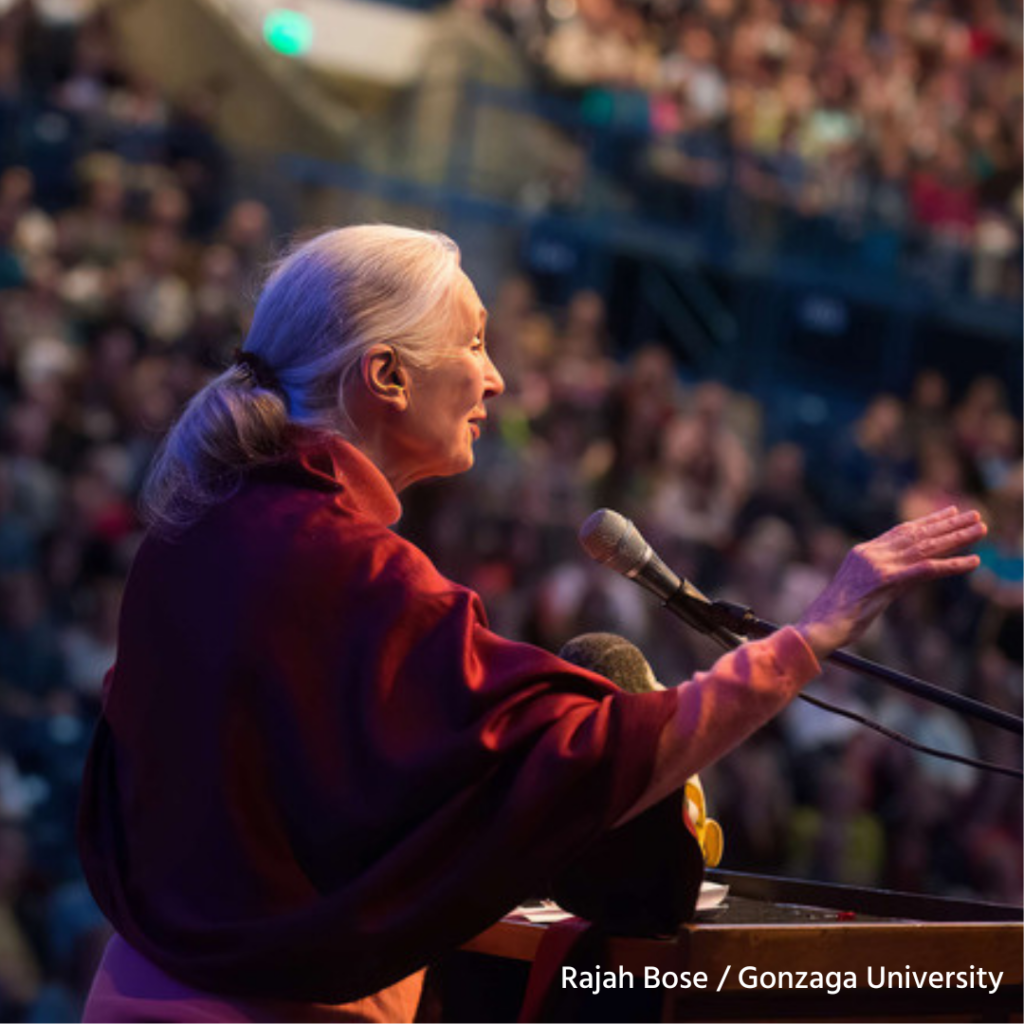
“My job now is to try and help people understand every one of us makes a difference. And cumulatively, wise choices in how we act each day can begin to change the world.”
Dr. Jane Goodall, DBE, Founder of the Jane Goodall Institute and UN Messenger of Peace, in an 🔗 interview with the Washington Post
BONUS: MAKE A PLEDGE TO FORM SMALL, REGULAR HABITS
Any of the resolutions above are fantastic ways to make an impact, but some may mean a considerable commitment on your part. If you’re feeling overwhelmed, remember this: the important part is that you make any effort, however small! Every little action is a step towards a better world, so if the resolutions above aren’t realistic in the scope of your life, try making a pledge to a smaller, regular habit! Here are some examples (a listicle within a listicle!):
- Try out one plant-based meal per week
- Pick up at least one piece of litter per day
- Take 5-minute showers
- Turn off all inessential electronics at the end of each day
- Spend at least 10 minutes outside each day
There are so many more ways to make this a year of individual and global impact! How will you be a conservation hero?

